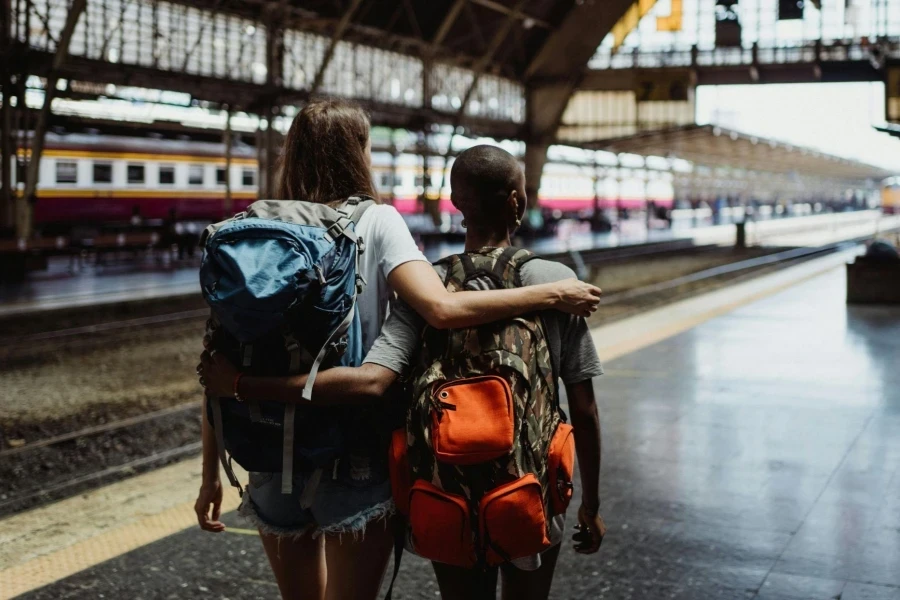Table of Contents
● Introduction
● Understanding the key types of travel backpacks
● The market outlook: Travel backpacks in 2025
● Factors to consider when selecting the ideal backpack
● Top picks for 2025
● Conclusion
Introduction
Selecting the perfect travel backpack is essential in guaranteeing comfortability and convenience on journeys in 2025. Whether it’s intended for business trips or longer outdoor escapades, a top-notch backpack is crucial in catering to various travel requirements. With design, materials, and functionalities advancements, the newest travel packs provide features ranging from well-planned storage areas to technology-friendly elements such as laptop pockets and anti-theft closures. Travelers benefit from durable materials and comfortable designs with plenty of storage options. The ideal backpack helps to carry belongings safely and conveniently while enhancing the overall travel experience.
Understanding the key types of travel backpacks

Choosing the appropriate travel backpack from the array of options available is crucial for different types of travel, whether for work trips or outdoor escapades. Each type has its merits and features designed to meet intended needs and make traveling a breeze in every situation.
Carry-on travel backpacks
Carry-on backpacks are made to adhere to airline size restrictions and provide storage space within a compact design. They typically have clamshell openings for easy access when packing and unpackaging belongings. Those who value organization while traveling should consider models that offer multiple compartments and secure zippers. There are plenty of choices in this category that aim to offer storage for your necessities while keeping a lightweight construction for easy mobility in airports and train stations without the heft of standard luggage options. These backpacks are especially popular among travelers who want a mix of practicality and compliance with carry-on rules.
Hiking and outdoor travel backpacks
Hiking and outdoor backpacks are known for their strength and spaciousness, making them perfect for extended journeys under demanding conditions. They are usually crafted from materials that can withstand water and harsh weather elements to shield equipment from potential damage and catered towards those carrying bulky items like tents or hiking gear across different terrains. These backpacks have added conveniences such as cushioned shoulder straps and hook-and-loop hip belts. Well-aerated back panels ensure a comfortable experience during long treks or overnight adventures. Furthermore, these models typically come with attachment points for items such as trekking poles and ice axes to ensure that adventurers can access all the necessary gears.
Tech-friendly backpacks for business and work trips
Tech-savvy backpacks are designed for professionals. They combine style and convenience effortlessly by including cushioned sections to safeguard laptops and tablets against damage while accommodating other electronic devices securely in organized compartments. These chic and understated backpacks cater to individuals who prioritize a blend of utility and a polished look during their business travels. Prominent attributes typically comprise USB ports for charging gadgets conveniently anytime and anywhere, lockable zippers for enhanced safety, and water-repellent materials to shield valuable tech gear from harsh weather conditions. These backpacks are made for easy access so that travelers can easily grab their laptops during airport security checks or business meetings without any hassle. Likewise, a lot of these designs prioritize a sleek shape, making them perfect for city commutes or shorter business journeys.
The market outlook: Travel backpacks in 2025

The worldwide travel backpack market is projected to see expansion as travel patterns change following the pandemic. Industry analyses suggest that the luggage sector for travel gear, like backpacks, is anticipated to hit $31.76 billion by 2028. The growing need for versatile products primarily fuels this growth. The increasing popularity of travel backpacks caters to various purposes, be it for quick business travels or prolonged outdoor escapades. The trend towards creating more portable designs to cater to the requirements of present-day travelers is also driving this growth. In particular, there is a rising demand for backpacks that are crafted to adhere to airline carry-on rules while providing room for necessary items.
In 2025, a significant trend influencing the travel backpack industry is the notable sustainability factor. In the coming years, the market for eco-travel items is projected to expand by more than 10% annually as consumers show a growing preference for environmentally conscious options. Backpacks crafted from polyester and nylon are becoming popular as travelers gravitate toward sustainable alternatives. These materials contribute to reducing environmental impact and provide long-lasting durability and water resistance, making them well-suited for various travel scenarios. As more businesses incorporate eco-friendly methods into their production processes, the demand for eco-conscious travel backpacks is projected to grow even larger, given that sustainability is increasingly crucial in influencing consumer choices.
The impact on travel habits and preferences has led to changes in the types of travel gear people seek, with backpacks becoming popular choices for travelers today. As international travel starts to pick up after the pandemic hiatus, around 54% of travelers are now searching for versatile backpacks that can smoothly transition from work trips to leisure vacations. The trend towards seeking practicality and convenience is evident in the rising demand for roomy backpacks that cater to carry-on size restrictions and offer functionality for navigating airports, urban areas, and outdoor spaces. The desire for eco products has increased significantly as the market for sustainable luggage is expected to expand by 7.5% in 2025. Backpacks crafted from recycled materials such as PET plastic and nylon are gaining popularity among consumers who value both practicality and environmental awareness.
In addition to sustainability concerns in the market sector, there is a growing trend of consumer preferences driven by innovation. Travelers are now showing a preference for backpacks that come with features like USB charging capabilities, RFID blocking sections, and anti-theft technology. Over 40% of travelers are now prioritizing these tech-savvy options. There is also an increasing interest in modular backpacks with designs that offer customizable storage solutions through detachable compartments, with 32% of travelers favoring this adaptable feature. The need for creativity and adaptability is driving producers to design travel backpacks that combine functions with a stylish and polished look. With these developments merging in the market scene, there will soon be a rise in multipurpose and technology-savvy backpacks catering to various travel requirements.
Factors to consider when selecting the ideal backpack

Capacity and size
Selecting the appropriate backpack size plays a crucial role in aligning with the journey’s duration and the travelers’ packing styles. For brief work travels, a backpack-sized from 20 to 35 liters is usually a good fit, while longer trips may call for bigger bags ranging between 40 to 60 liters. Finding the sweet spot between space and ease of movement is essential. Stuffing too much in your backpack can cause discomfort, whereas going light in a large bag can leave unused space and extra weight unnecessary. Travel backpacks come with expandability or compression straps built in them, making them a top choice for travelers who value flexibility and convenience, as they can easily adjust backpack size to suit their requirements without compromising comfort or ease of movement.
Durability and materials
Selecting a durable travel backpack is crucial for frequent travelers and those exploring rough terrains or environments that pose challenges to gear longevity. Recent advancements in materials such as recycled polyester and denier nylon with water-resistant coatings have improved the durability of modern backpacks while meeting the increasing preference for eco-friendly products. These materials not only boost resistance to damage but also shield the backpack contents from various weather conditions, ensuring their safety even in unpredictable situations. Top-notch zippers enhance the durability of the bag and strong stitching helps prevent wear and tear over time.
Comfort and ergonomics
Travelers who spend long periods carrying backpacks prioritize comfort when selecting their gear for the road trip. The design of the bag is essential to ensure this comfort is achieved effectively by incorporating unique features. Suspension systems evenly distribute weight across the body and reduce strain on the back and shoulders. Padded shoulder straps provide additional comfort and support throughout the journey while adjustable hip belts aid in achieving a personalized fit that complements each traveler’s unique body shape. Breathable mesh back panels contribute to overall coziness by allowing ventilation and avoiding sweat accumulation during prolonged travel. These characteristics are crucial for people who enjoy exploring outdoors and for individuals moving through airports as they guarantee a pleasant carrying experience even when the backpack is packed to capacity.
Top picks for 2025

Backpacks for travelers in 2025 are anticipated to combine practicality and durability with innovative styles to suit different trips effectively. One promising option is the group of carry-on travel backpacks tailored to airline requirements while emphasizing space efficiency without compromising ease of use. They are equipped with features like clamshell openings and compression straps for organizing items while providing ample room for personal and work necessities. Their lightweight and small size make them ideal for getaways without the hassle of checking in luggage.
When going on extended journeys or embarking on escapades outdoors, hiking and outdoor travel backpacks remain popular among adventurers and explorers in the market scene today. These backpacks typically range between 50 to 65 liters in size. They boast spacious interiors with numerous compartments and ergonomic structures that guarantee comfort even during prolonged usage periods. They are crafted from materials like high-denier nylon that offer water resistance qualities, making them perfect for carrying bulkier items such as outdoor equipment for activities like camping or clothing suitable for various weather conditions. Travelers can go long distances comfortably thanks to features like adaptable suspension systems and sturdy stitching, with cushioned hip belts that help distribute weight efficiently.
In 2025, the lineup of picks is a selection of tech-friendly travel backpacks designed for individuals like business executives and remote workers on the move. These bags feature cushioned sections for laptops and tablets and USB ports for charging while out and about. Moreover, they have pockets that block RFID signals to keep important papers and gadgets safe. With the rising importance of technology and safety among travelers, these backpacks blend aesthetics with useful attributes to strike a harmonious blend of fashion and practicality. They feature secure zippers to prevent theft and a sturdy design with pockets for storing valuable items safely during travel.
Conclusion

Finding the right travel backpack for 2025 involves weighing important factors like size, strength, and comfort while considering the increasing desire for technology-friendly and environmentally-friendly choices. There are plenty of options in the market for various types of travel, be it work-related trips, outdoor escapades, or even last-minute holidays. Thanks to features such as customizable designs and sustainable materials being used more widely in the backpack-making business, these recent backpack models elevate the travel experience and resonate with changing consumer preferences. In the end, the best option is determined by aligning individual travel needs with the fitting amenities offered.




